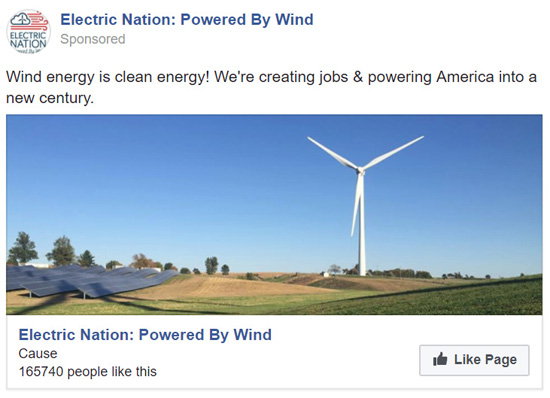Also published on Medium.com as Digital Beachheads: How to Use Facebook to Build Progressive Support in Trump Country
You don’t always get to pick your battlefields when you want to change a country. For progressives, many of our policy and political fights will take place by necessity in hostile territory, where Trump is still an idol and liberal ideas rarely get a hearing. How can we win in MAGA America?
Trumpland is Not a Monolith
First, remember that even the reddest states aren’t ENTIRELY conservative. Democrats may be grossly outnumbered in rural Wyoming, but they still exist — and they still vote.The trick lies in reaching them without exciting an equal and opposite reaction from their right-wing neighbors. Fortunately for us, digital advertising lets us deliver targeted messages only to people likely to respond, even if they may be rare in a given community. Once we’ve connected with the right voices, we can encourage them to become ambassadors for our causes and campaigns within their own social circles.
Remember that even the reddest states aren't ENTIRELY conservative. Democrats may be grossly outnumbered in rural Wyoming, but they still exist -- and they still vote. Click To TweetFor many purposes, banner ads and video ads targeted via a voter file provide a great option to reach defined slices of the electorate. Like TV ads, though, banners and video ads generally don’t foster much of a direct connection between a supporter and a campaign, unless they’re specifically directing people to sign up for an email list or Facebook page. They rarely ask people to take a follow-up action that can influence their peers.
By contrast, Facebook is built around the concept of connection. It links friends with friends, family with family…and corporate brands with their customers, actual and potential. Because Facebook gathers so much data about its users, advertisers can put messages in front of people who meet defined criteria like age, gender, income, cultural background, personal interests and much more. Once a target bites, the company or campaign can follow up with content designed to get that person to act, either within Facebook or in the real world.
Once we’ve connected with the right voices, we can encourage them to become ambassadors for our causes and campaigns within their own social circles. Click To TweetNo targeting is perfect, though, and your Dem-hunting Trump-country Facebook ads are still likely to land in front of people who do not like what they have to say — and who can trample all over your messaging via nasty comments on your posts. Plus, we WANT our messaging to have a chance to persuade people on the edges of the Trump coalition, so it HAS to reach people who don’t already agree with us. In this case, Facebook’s social nature can work against outreach in hostile territory: who wants to Share a story that their neighbors are already trashing? When you’re paying to promote content intended to mobilize and persuade, trolls can be a serious threat.
Digital Beachheads

My colleague Jessica Bates and I encountered this problem in a project we built with the staff at the Wind Energy Foundation (now the Wind Solar Alliance) from 2016 until the end of last year. Electric Nation was basically an experiment: could we build a robust online community of people who are excited about wind energy? And, could we mobilize them to push back against the anti-wind disinformation that circulates in rural America?
The answer to both questions was “yes”, but in the process of reaching out in wind country, we often encountered the dark side of Facebook. Once a single person left a comment attacking wind energy on one of our posts, others would usually dive in right away. Just a handful of negative voices could completely change the tenor of conversation, even if literally thousands more people “Liked” the post than commented on it. We monitored the conversation, of course, and hid most negative comments when we saw them, but we could not pay attention all the time to every paid post all the time.
The dark side of Facebook social validation: just a handful of negative voices could completely change the tenor of a conversation. Click To TweetIf the early comments on a post were positive, though, it seemed to inhibit the pile-on effect of negative commenters. In fact, early positive comments would tend to spark a virtuous cycle instead of a vicious one, leading to MORE positive comments replying to the first. This bandwagon effect was particularly pronounced when we promoted content in areas where we had already built up a base of Facebook followers via paid recruiting (“like this page” ads). Having a few supporters already on board also provided social validation: because Facebook includes a “your friends X, Y & Z Like this Facebook page” notification on promoted posts, potential supporters can see that we had at least a few “thumbs-ups” from people they knew.
As the Electric Nation community built up, our followers not only preempted the trolls, they actively fought back, and as they left comments answering the critics, their friends and family could see what they were doing. Their engagement with our content automatically helped it spread to new people.
One key contributor to this dynamic: people cannot leave comments on Facebook recruiting posts. If you run “Like this page” ads such as the one above, they’re safe from troll pile-ons and similar dissuaders, and you can present your messaging unfiltered. You may want to target your initial outreach via demographic or “interest” filters, but you can also let Facebook find supporters for you. Facebook “knows” every action we’ve taken on Facebook and every person we’re “friends” with, and it will refine ad delivery based on who reacts to them. Each new follower provides Facebook with more data for “lookalike” targeting behind the scenes, and we saw good results with Electric Nation when we simply let Facebook find users likely to support wind energy.
Step By Step
To put this approach to work:
- Create a Facebook page if you don’t have one (you may want to create pages specific to the areas you need to reach, i.e. “West Texans for This and That”)
- Define the geographic area you need to reach (for Electric Nation, we often targeted a list of about 1200 zip codes in wind country)
- Define any demographic criteria specific to your campaign (young people, women, etc)
- Prepare recruiting ads with short, sharp text and vibrant images
- If possible, run several variants of the ads with different text and images, both to measure effectiveness and to see which resonate with different demographic slices of the audience
- Publish content designed to keep your followers engaged and excited around your issues. Particularly valuable: content they want to share.
- Promote content beyond your page followers. You may want to target “people who follow your page and their friends”, particularly before your following has had a chance to grow. This way, you’ll be sure to benefit from social validation.
- Monitor comments on your posts (both organic and promoted) and hide trolls as needed. You may find that having a few pet trolls actually helps your page, since it gives followers someone to band against. Trolls can help create community, perversely.
- As your community grows, promote your persuasive content far and wide in your targeted territory. You now have social validation and a strong community working for you, so look for evidence of changing hearts and minds.
- Ideally, your campaign would pair digital outreach with on-the-ground organizing or other paid media, but that’s not always an option.
Obviously, no strategy will work in every situation, and this approach may not be a good fit for your particular campaign. Community-building takes time, for example, so short-term campaigns may not be able to assemble a critical mass of support fast enough to benefit from social validation.
We’ve focused on progressive outreach in Trump country, but a conservative group could apply the same approach when trying to pick off people in cities and suburbs not fully on board with the Democrats and the Left. In America in 2019, though, progressives have a big job of persuasion ahead of us if we want to break out of our urban enclaves, but also a pool of potential targets dissatisfied with what they’ve seen from Trump so far. Digital beachheads may not be THE answer, but it’s an approach well worth trying. After all, it’s only the future of our country on the line.
In America in 2019, progressives have a big job of persuasion ahead of us, but also a pool of potential targets dissatisfied with what they’ve seen from Trump so far. Click To Tweet– cpd


